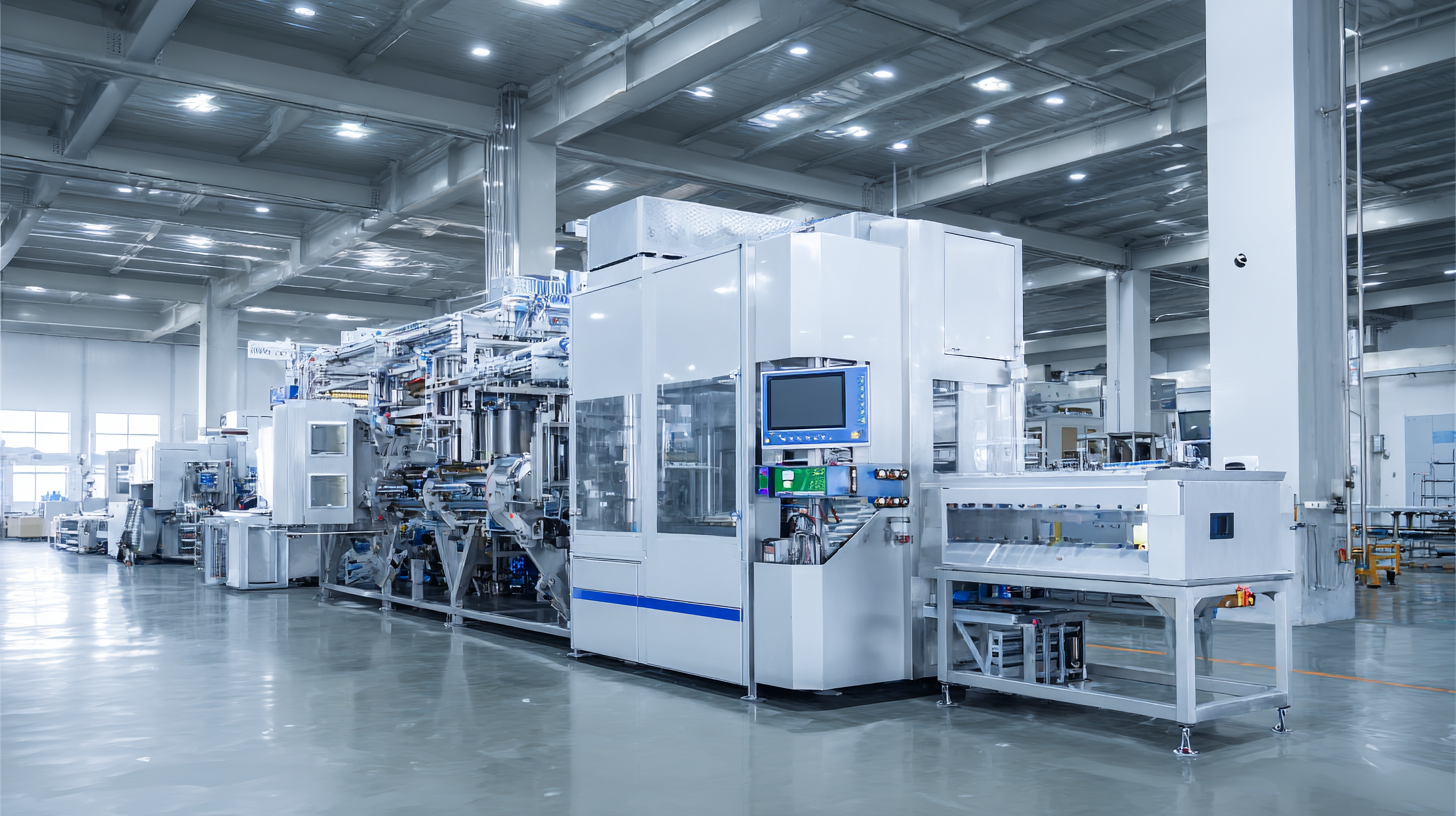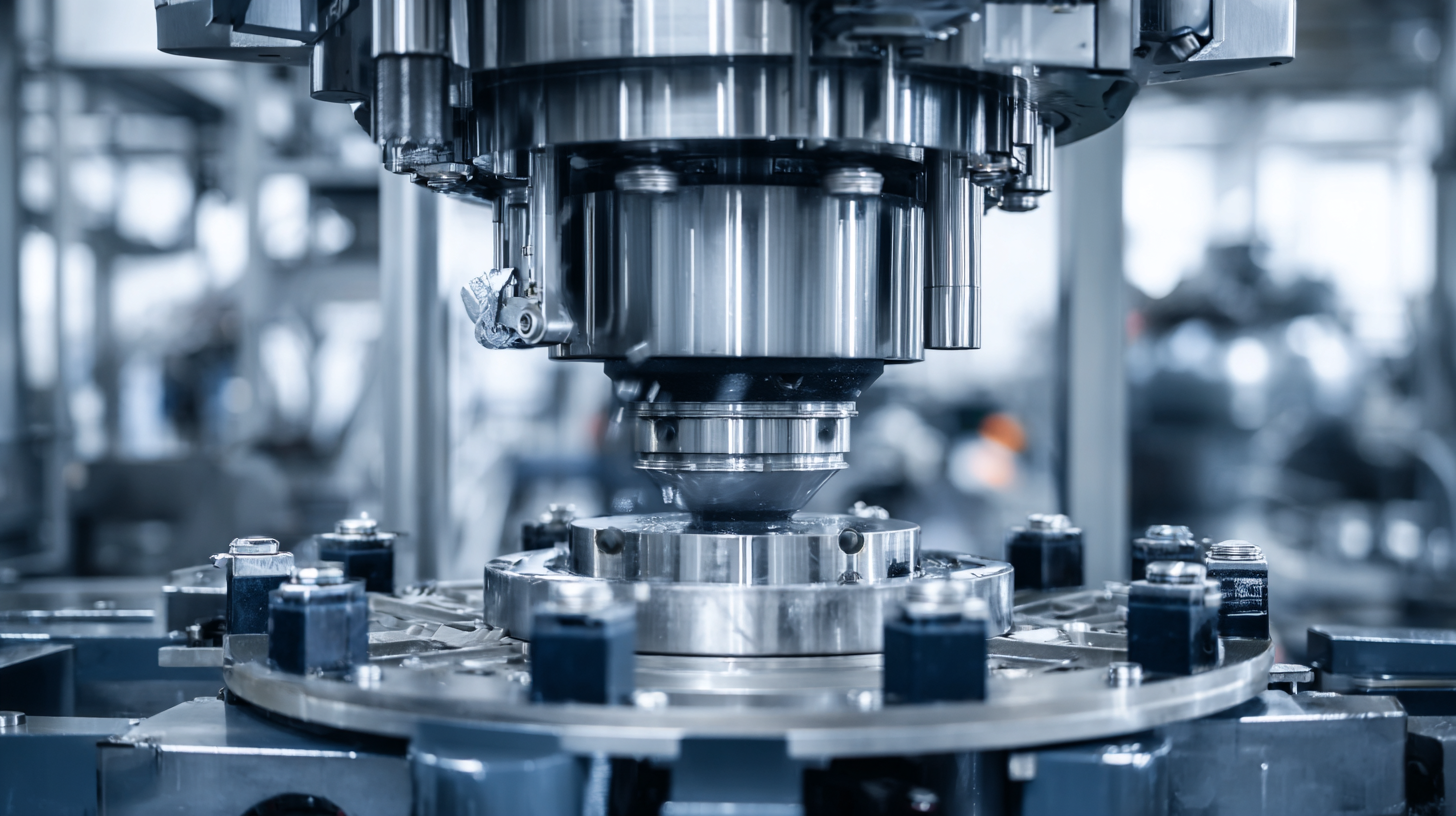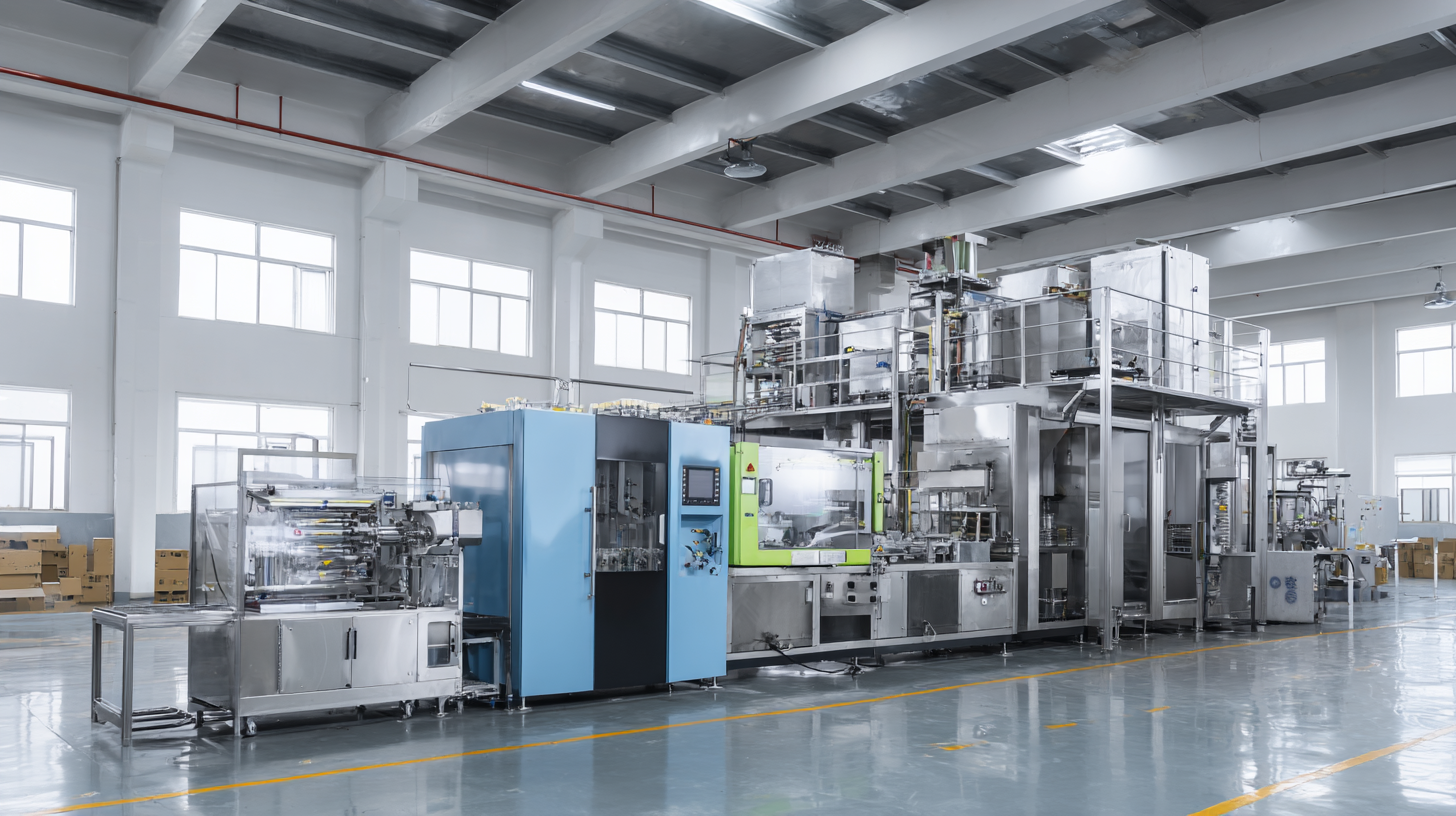ProMach is your partner from start to finish. Our product brands are grouped into distinct business lines that make the most sense to our customers, covering every function of the production line: Filling, Bottling & Capping, Decorative Labeling, Flexibles & Trays, Pharma, Handling & Sterilizing, Labeling & Coding, Robotics & End of Line, and Systems & Integration.
learn more2025 Trends in Packaging Automation: Your Ultimate Checklist for Investing in the Best Vertical Form Fill Seal Machines
As businesses increasingly pivot towards automation in packaging to enhance efficiency and sustainability, the demand for advanced machinery like the Vertical Form Fill Seal Machine continues to rise. According to a recent industry report by MarketsandMarkets, the global packaging automation market is projected to reach $23.37 billion by 2025, with a compound annual growth rate (CAGR) of 12.5% from 2020 to 2025. This growth is fueled by factors such as the rising need for operational efficiency and reduced labor costs, which are crucial in today’s competitive landscape.
 The Vertical Form Fill Seal Machine plays a pivotal role in this transformation, offering versatility for various applications across food, pharmaceuticals, and consumer products sectors. As we explore the latest trends and provide a comprehensive checklist for investing in these machines, understanding their potential to revolutionize packaging processes will be vital for businesses aiming to stay ahead in the evolving market.
The Vertical Form Fill Seal Machine plays a pivotal role in this transformation, offering versatility for various applications across food, pharmaceuticals, and consumer products sectors. As we explore the latest trends and provide a comprehensive checklist for investing in these machines, understanding their potential to revolutionize packaging processes will be vital for businesses aiming to stay ahead in the evolving market.
Key Market Drivers Shaping Packaging Automation Trends for 2025
As the packaging automation industry gears up for 2025, several key market drivers are anticipated to shape trends. The global vacuum packaging market is projected to reach $32.91 billion by 2025, with a compound annual growth rate (CAGR) of 6.17% until 2032. This growth is indicative of the rising demand for extended shelf life and enhanced product security, pushing manufacturers to adopt advanced vertical form fill seal (VFFS) machines. The incorporation of automation in packaging processes not only boosts efficiency but also meets the evolving consumer preferences for convenience and ready-to-eat products.
In addition, the high-speed inkjet printer market is expected to grow significantly, with a value of $14.04 billion in 2025, illustrating a CAGR of 4.5% through 2033. This trend underscores the importance of flexibility and high-speed production in catering to the diverse needs of various industries, including food and beverage. The increasing demand for customization in packaging further accelerates the need for innovative machinery that integrates seamlessly into existing production lines. This alignment of consumer behavior and technological advancement suggests that investing in state-of-the-art VFFS machines will be crucial for businesses looking to thrive in a competitive landscape.

Innovations in Vertical Form Fill Seal Technology: What to Look For
The vertical form fill seal (VFFS) technology is rapidly evolving, presenting exciting innovations for manufacturers looking to enhance their packaging processes. When investing in a VFFS machine, it's essential to consider specific functionalities that cater to your production needs. For instance, machines capable of creating various package types—such as pillow, gusseted, or flat bottom packages—are invaluable for providing flexibility in product offerings. This adaptability is especially crucial in markets that demand quick response times and a diverse product range.

Moreover, advancements in automation are also shaping the landscape of VFFS equipment. With the growing necessity for speed, modern machines are being designed to meet high throughput requirements efficiently. Features such as enhanced sealing technologies and automated inspection capabilities are becoming standard in state-of-the-art machines. Attending exhibitions, like Ipack-Ima 2025, allows manufacturers to witness firsthand the latest developments in packaging technology and explore solutions that can significantly boost operational efficiency while keeping pace with industry trends.
Cost-Benefit Analysis: Investing in Vertical Form Fill Seal Machines
Investing in vertical form fill seal (VFFS) machines is becoming increasingly crucial for businesses looking to stay competitive in the packaging industry. As the packaging machinery market is projected to grow at a compound annual growth rate (CAGR) of over 4.5% from 2025 to 2032, it is expected to exceed USD 69.58 billion by 2032. This growth presents a significant opportunity for manufacturers to enhance their operational efficiency and reduce costs associated with manual packaging processes.
Conducting a thorough cost-benefit analysis is essential before investing in VFFS machines. These automated systems not only streamline the packaging process but also contribute to improved accuracy and reduced material wastage. By leveraging advanced technologies, businesses can achieve higher production rates while ensuring consistent product quality. Moreover, the initial investment in VFFS machines can yield substantial long-term savings through increased productivity and reduced labor costs, making them a valuable asset for manufacturers aiming to scale their operations effectively.
Sustainability in Packaging Automation: Trends and Considerations
Sustainability has become a pivotal aspect of packaging automation, especially as industries strive to reduce their environmental footprint. In 2025, businesses are increasingly focused on integrating sustainable practices within their packaging processes. This involves adopting vertical form fill seal machines that utilize eco-friendly materials and processes. The introduction of biodegradable films and recyclable packaging solutions can significantly reduce waste while maintaining product integrity. As consumers become more aware of their ecological impact, brands that prioritize sustainability are likely to gain a competitive edge.
Moreover, technological advancements are paving the way for more efficient and sustainable packaging automation. Companies are now investing in machines that optimize resource usage, minimize energy consumption, and enhance packaging flexibility. Innovations such as smart sensors and AI-driven analytics allow for real-time adjustments, leading to reduced material usage and less energy wastage. As we look ahead to 2025, the alignment of sustainability with packaging automation will not only meet regulatory standards but also foster trust and loyalty among environmentally conscious consumers. By making informed investments in vertical form fill seal machines, businesses can ensure they are at the forefront of this essential trend.
2025 Trends in Packaging Automation: Your Ultimate Checklist for Investing in the Best Vertical Form Fill Seal Machines
| Trend | Description | Sustainability Aspect | Consideration for Investment |
|---|---|---|---|
| Smart Technology Integration | Incorporating IoT and AI for enhanced efficiency. | Reduced waste through optimized production. | Ensure compatibility with existing systems. |
| User-Friendly Interfaces | Simplified controls for quicker operator training. | Less training time reduces resource consumption. | Evaluate vendor training programs. |
| Flexible Packaging Solutions | Adaptable machines for various package sizes. | More efficient use of materials and space. | Consider modular designs for future upgrades. |
| Energy Efficiency | Machines designed to minimize energy consumption. | Lower carbon footprint during operation. | Check energy ratings before purchasing. |
| Automation and Robotics | Increased automation to improve speed and accuracy. | Minimized human error, reducing waste. | Assess ongoing maintenance requirements. |
Future-Proofing Your Operations: Scalability and Flexibility in 2025
As we look ahead to 2025, the packaging automation landscape is evolving rapidly, emphasizing the need for scalability and flexibility in production lines. According to a recent report by MarketsandMarkets, the global market for vertical form fill seal (VFFS) machines is anticipated to grow from $3.9 billion in 2020 to $5.5 billion by 2025, reflecting a CAGR of 7.6%. This growth highlights the increasing demand for solutions that can adapt to varying product specifications and production speeds, essential for future-proofing operations.
Implementing VFFS machines that offer modular designs allows manufacturers to easily scale operations as demand fluctuates. Additionally, incorporating advanced technologies like IoT and AI can enhance the adaptability of these systems, facilitating seamless integration with existing processes. A report by PMMI reveals that companies investing in smart machinery can achieve a 25% increase in efficiency, underscoring the importance of flexibility in meeting market demands. By prioritizing these attributes, businesses can not only respond to immediate needs but also anticipate future trends, ensuring long-term success in the competitive packaging sector.